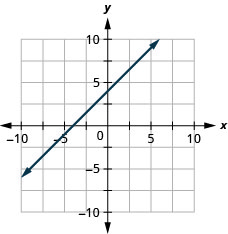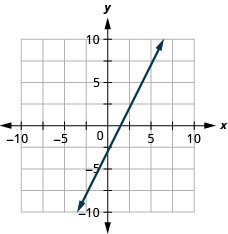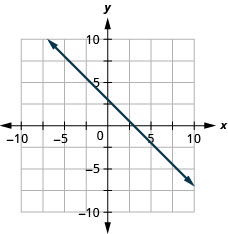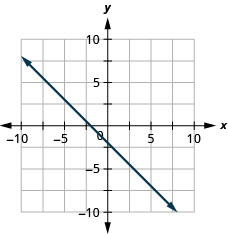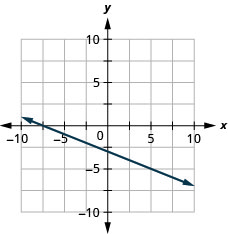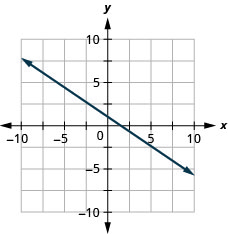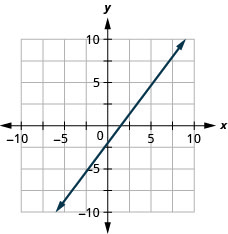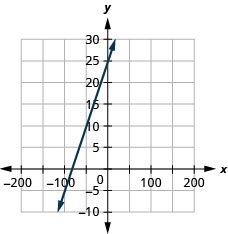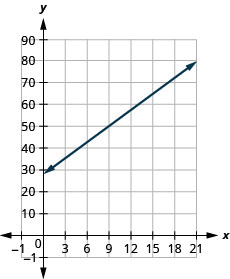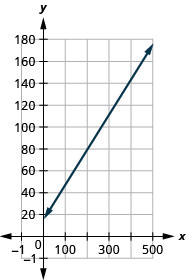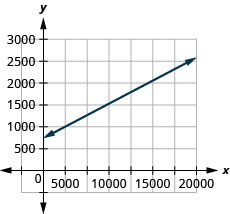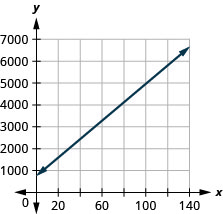Exercise Answers: Module 44
| 1. slope |
3. slope |
| 5. slope |
7. |
| 9. |
11. |
| 13. |
15. |
| 17.
|
19.
|
| 21.
|
23.
|
| 25.
|
27.
|
| 29.
|
31.
|
| 33. horizontal line | 35. vertical line |
| 37. slope–intercept | 39. intercepts |
| 41. slope–intercept | 43. horizontal line |
| 45. intercepts | 47. slope–intercept |
| 49.
a) $28 b) $66.10 c) The slope, 2.54, means that Randy’s payment, P, increases by $2.54 when the number of units of water he used, w, increases by 1. The P–intercept means that if the number units of water Randy used was 0, the payment would be $28. d) |
51.
a) $15 b) $143 c) The slope, 0.32, means that the cost, C, increases by $0.32 when the number of miles driven, m, increases by 1. The C-intercept means that if Janelle drives 0 miles one day, the cost would be $15. d) |
| 53.
a) $750 b) $2418.60 c) The slope, 0.09, means that Patel’s salary, S, increases by $0.09 for every $1 increase in his sales. The S-intercept means that when his sales are $0, his salary is $750. d) |
55.
a) $2850 b) $4950 c) The slope, 42, means that the cost, C, increases by $42 for when the number of guests increases by 1. The C-intercept means that when the number of guests is 0, the cost would be $750. d) |
| 57. parallel | 59. parallel |
| 61. parallel | 63. parallel |
| 65. parallel | 67. parallel |
| 69. parallel | 71. parallel |
| 73. not parallel | 75. not parallel |
| 77. not parallel | 79. not parallel |
| 81. not parallel | 83. perpendicular |
| 85. perpendicular | 87. not perpendicular |
| 89. not perpendicular | 91. perpendicular |
| 93. perpendicular | 95.
a) For every increase of one degree Fahrenheit, the number of chirps increases by four. b) There would be |
| 97. Answers will vary. |

